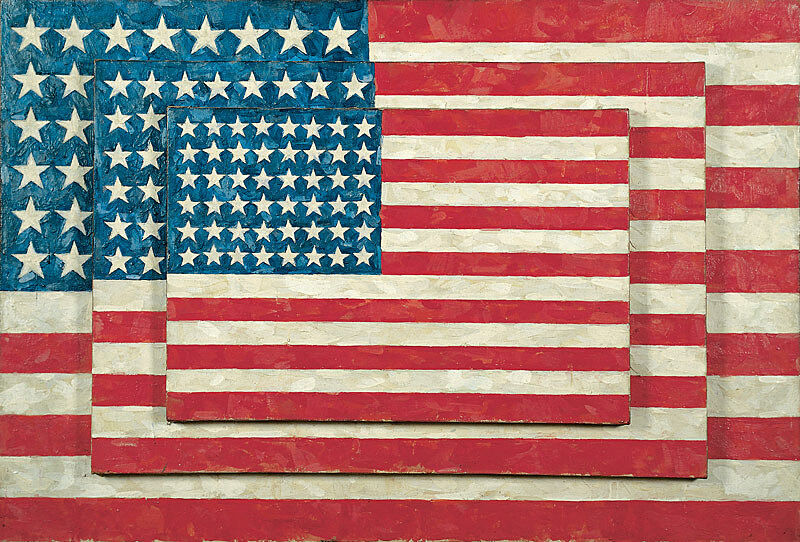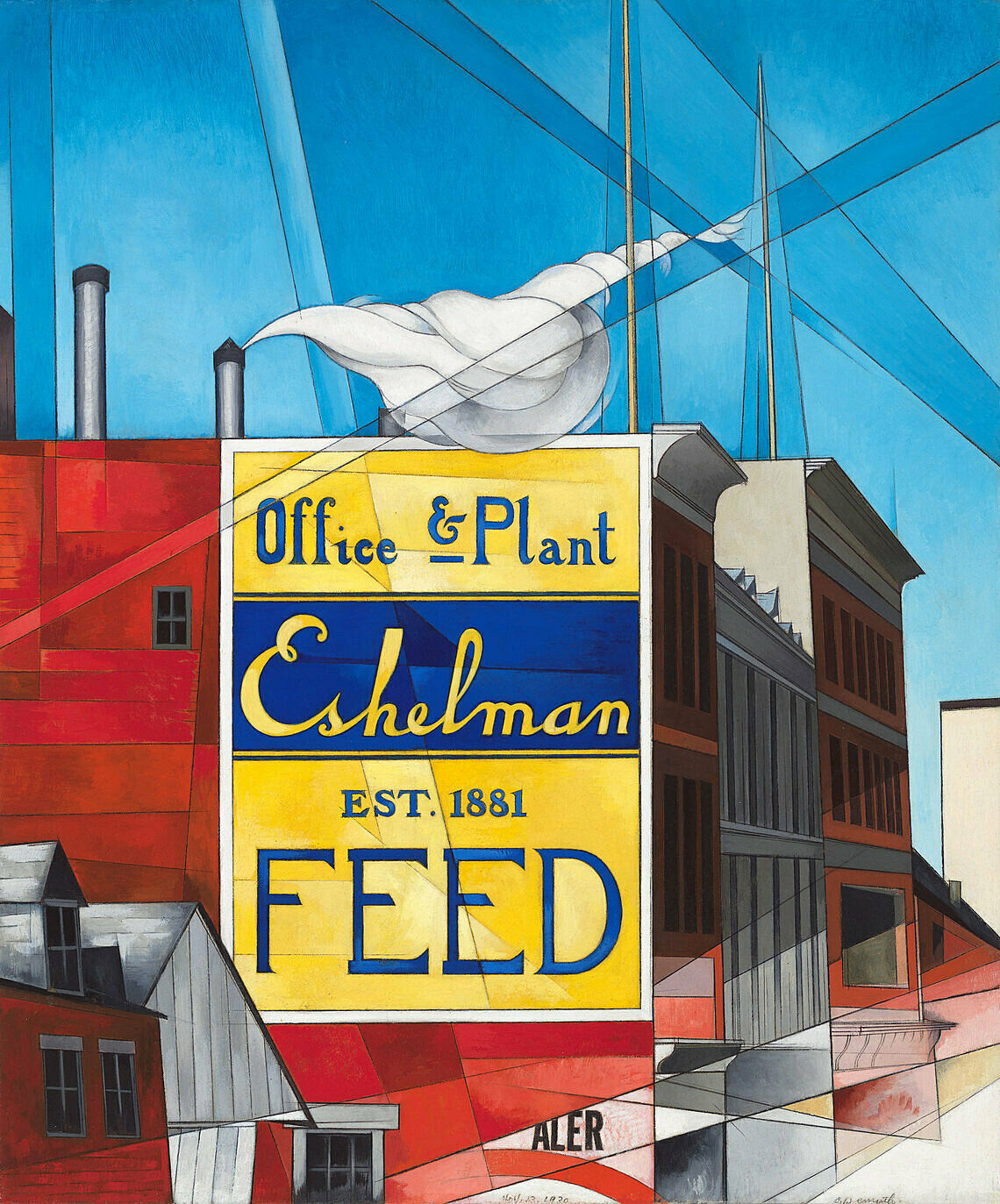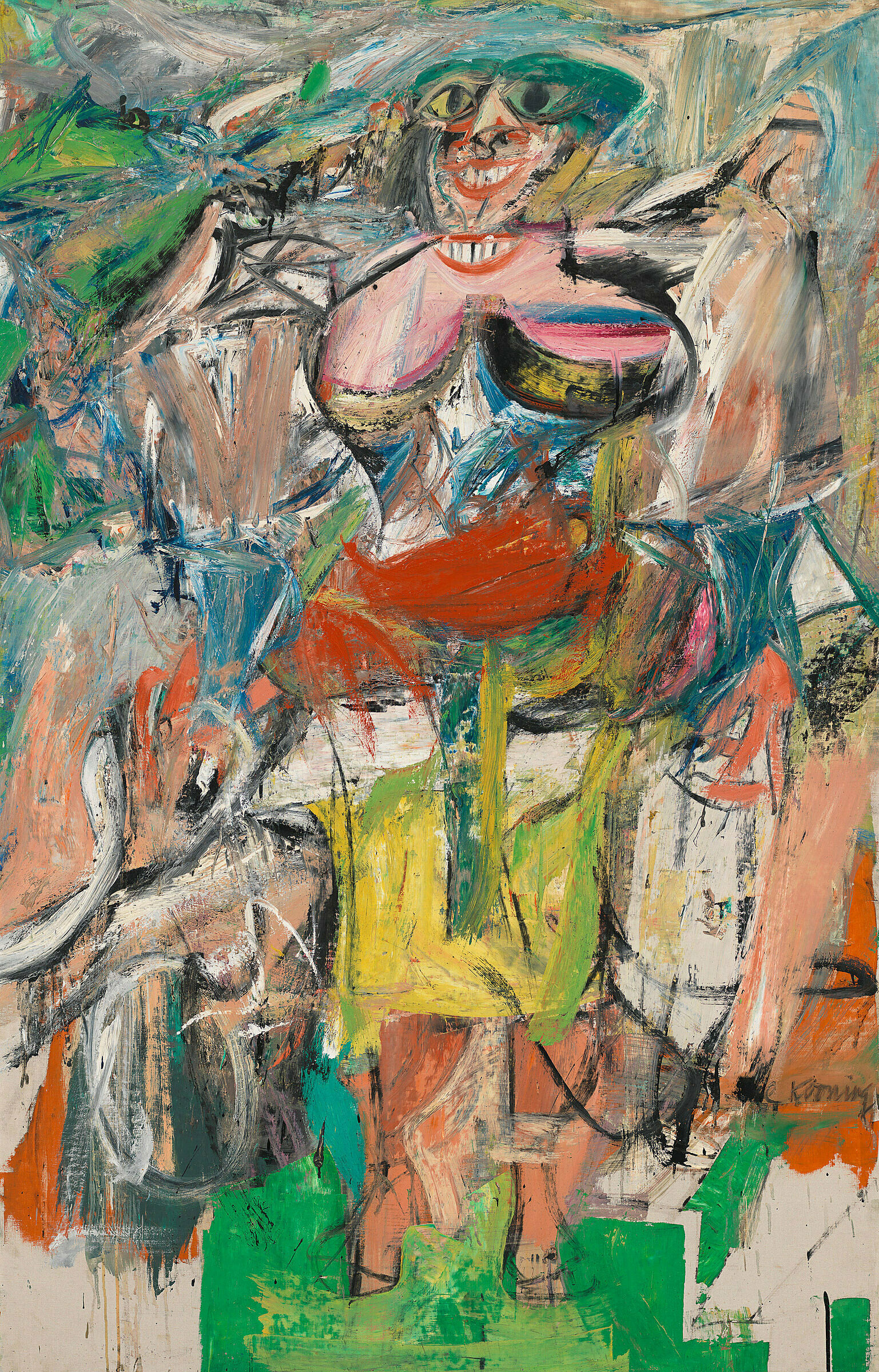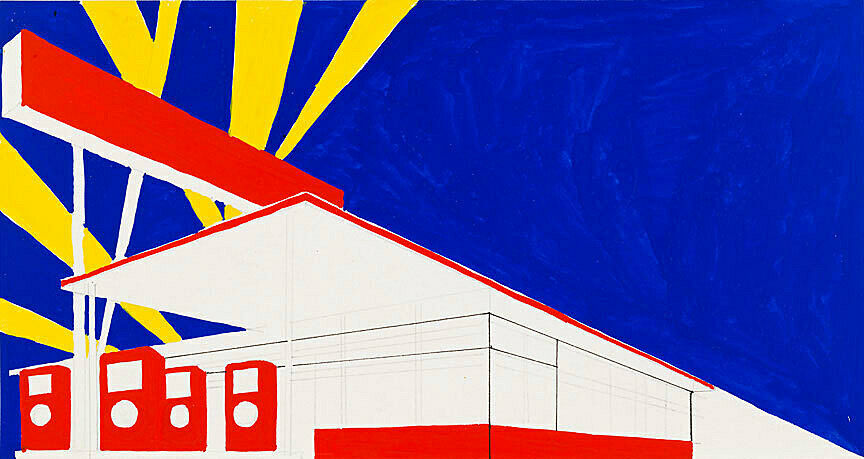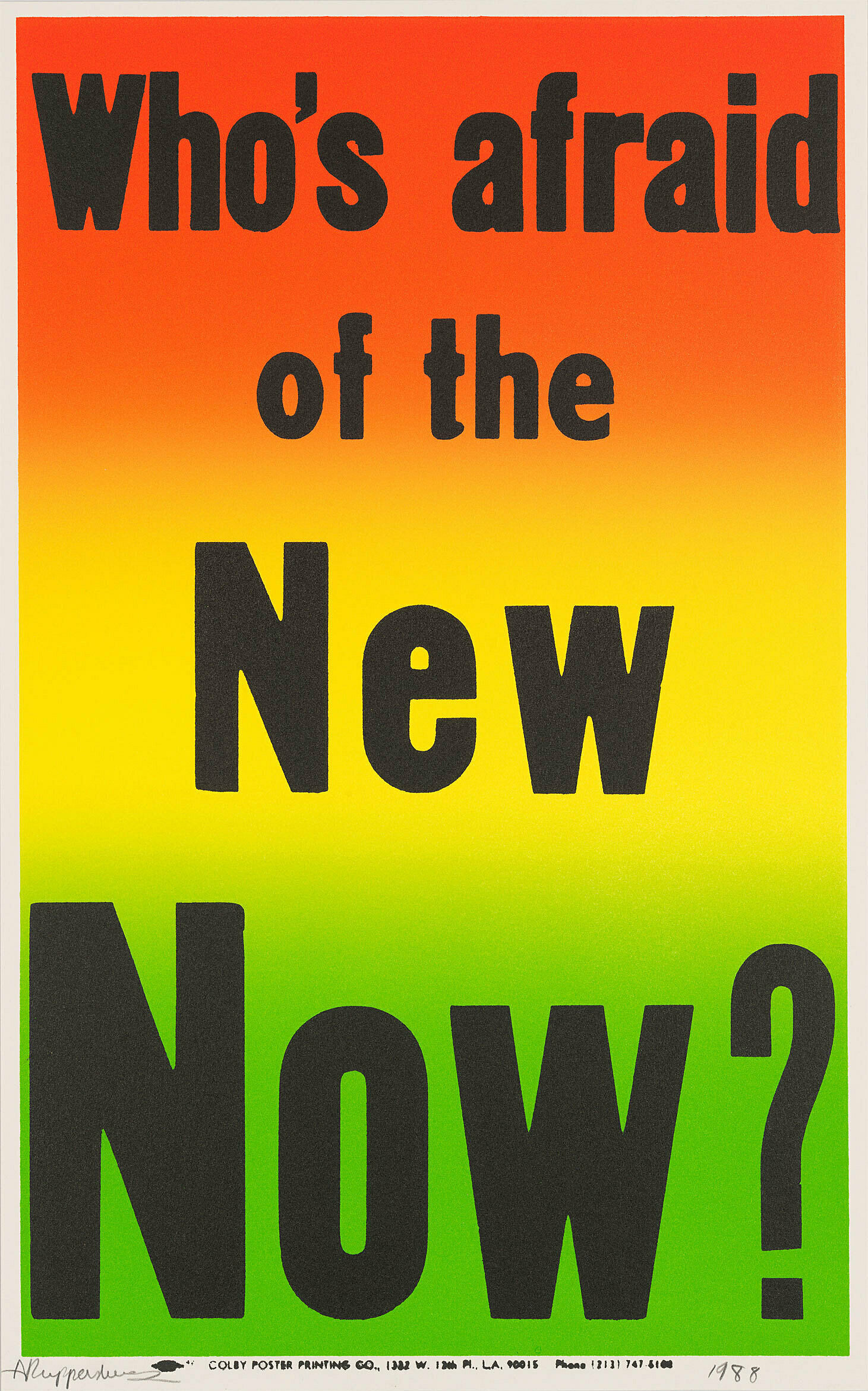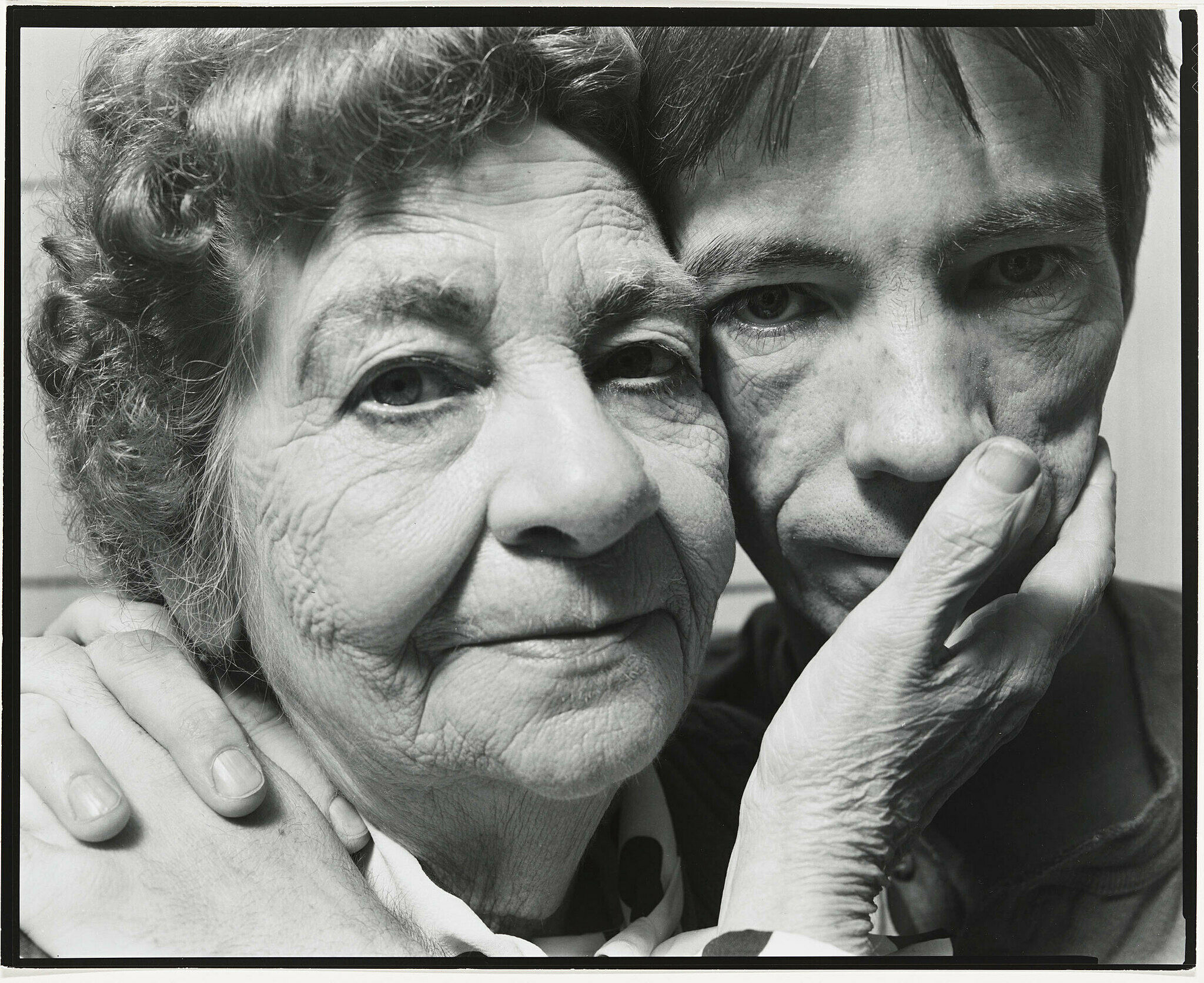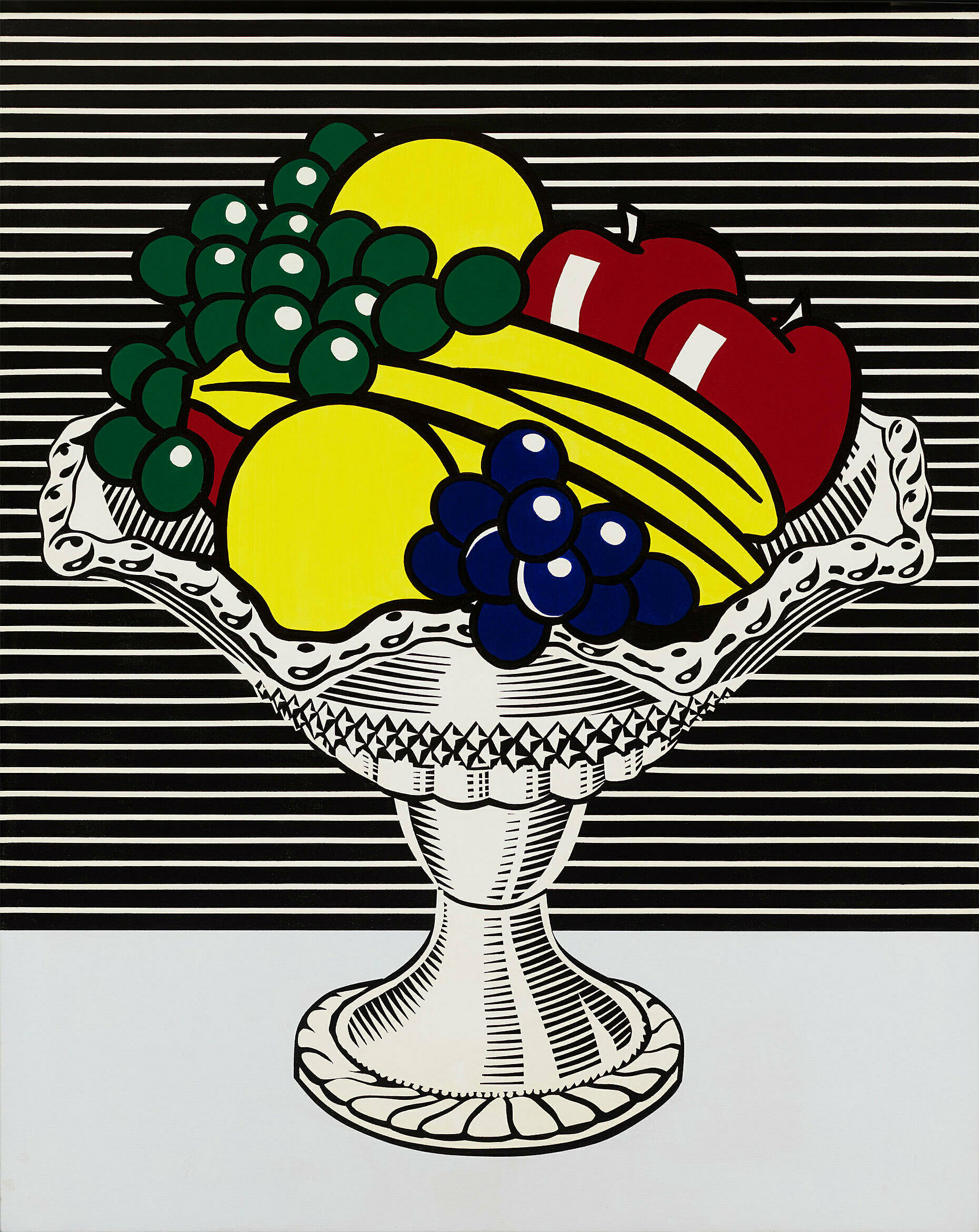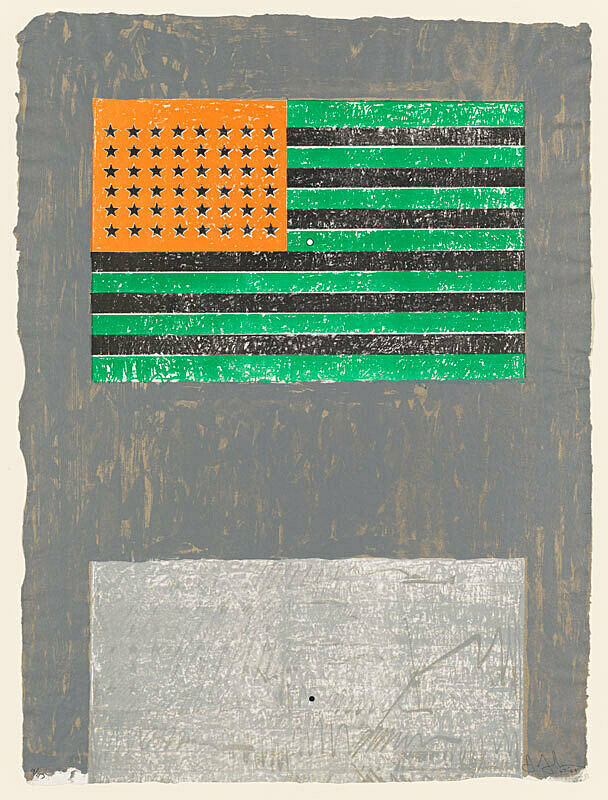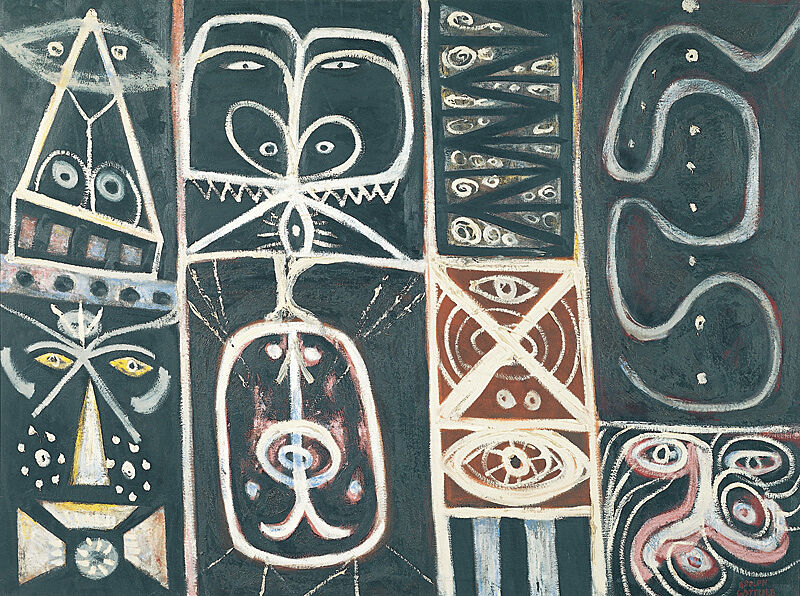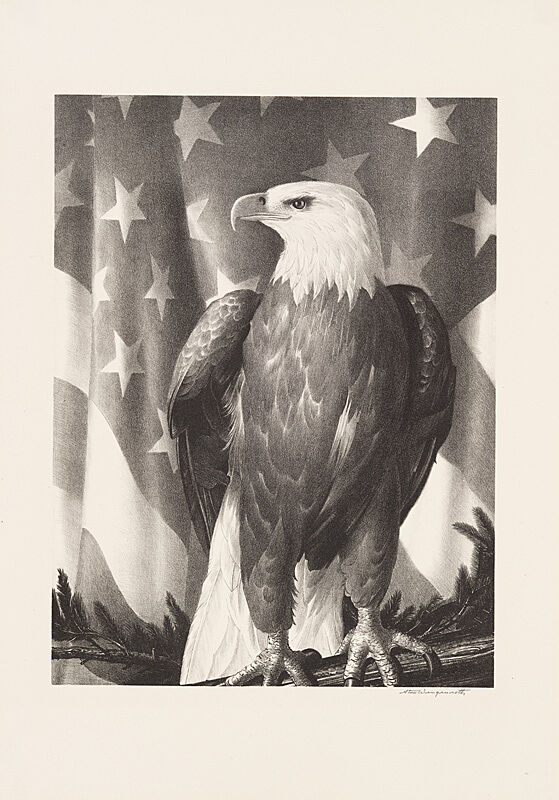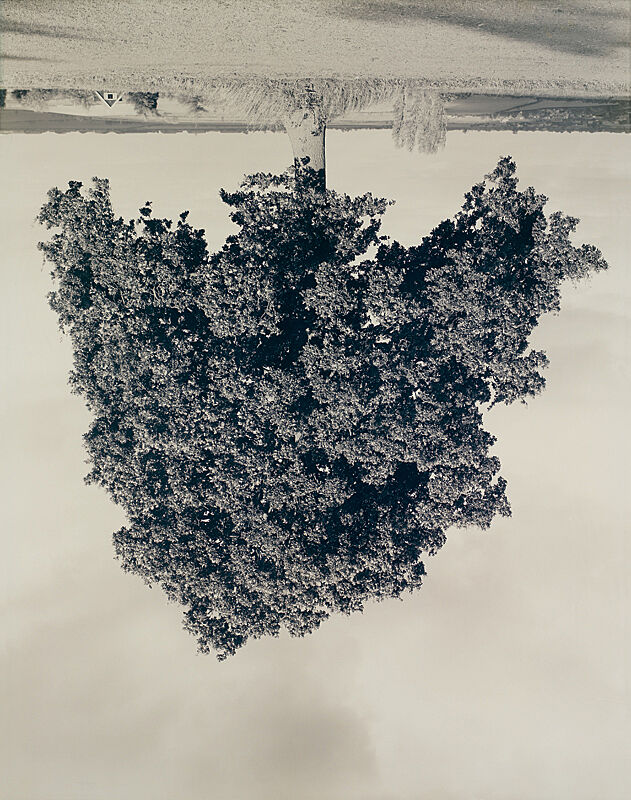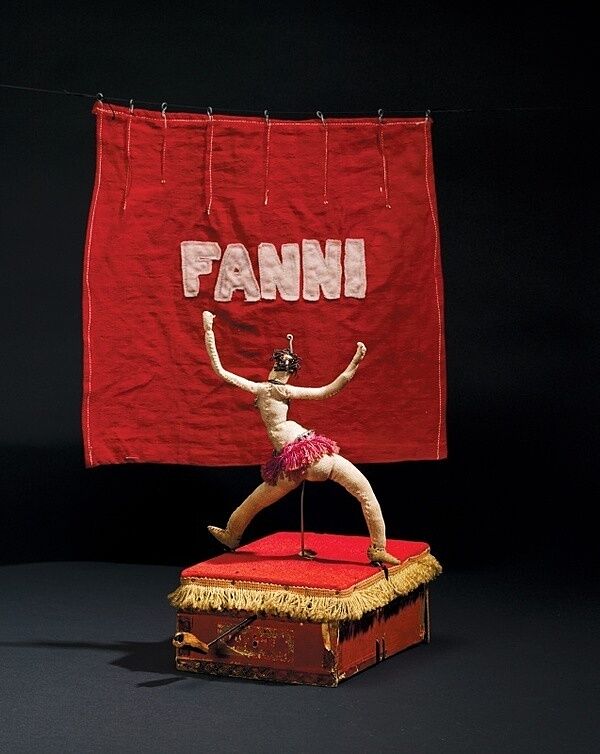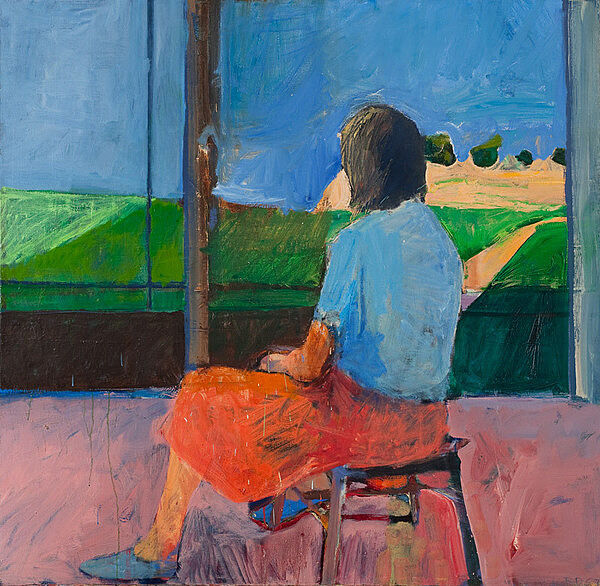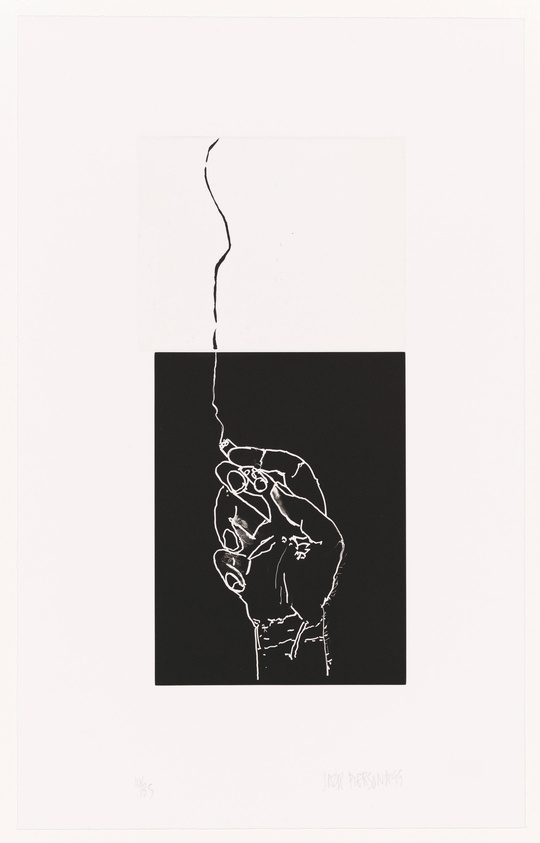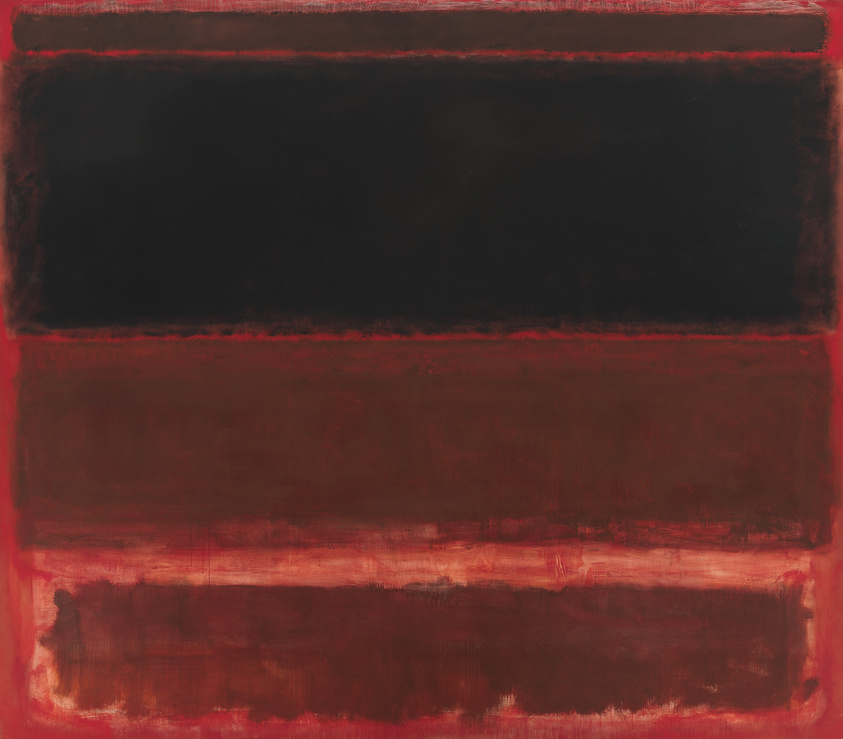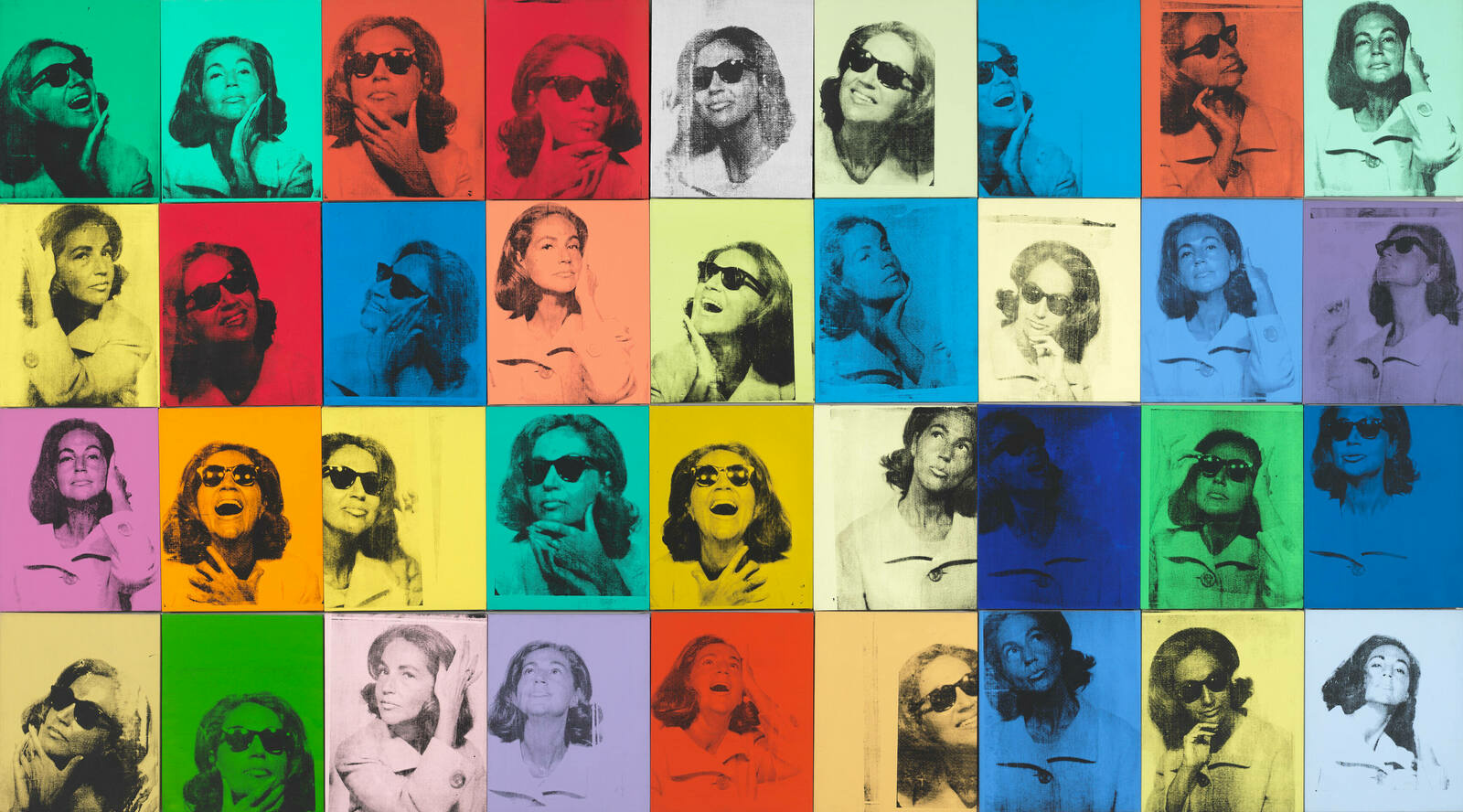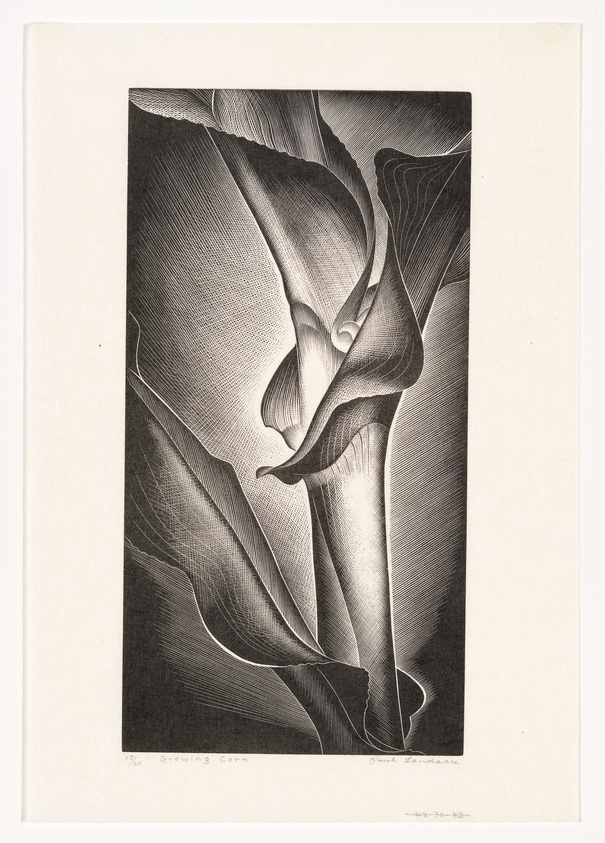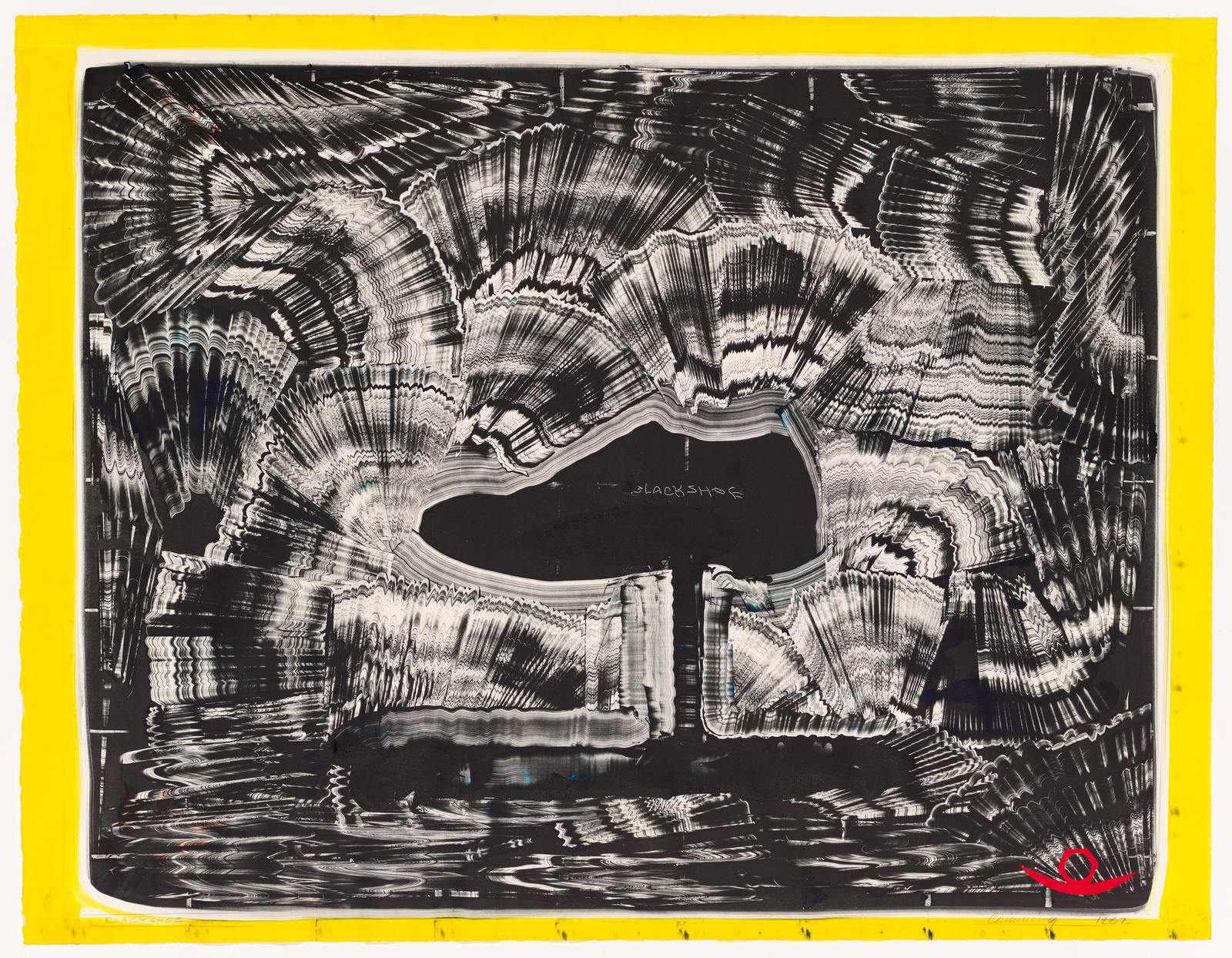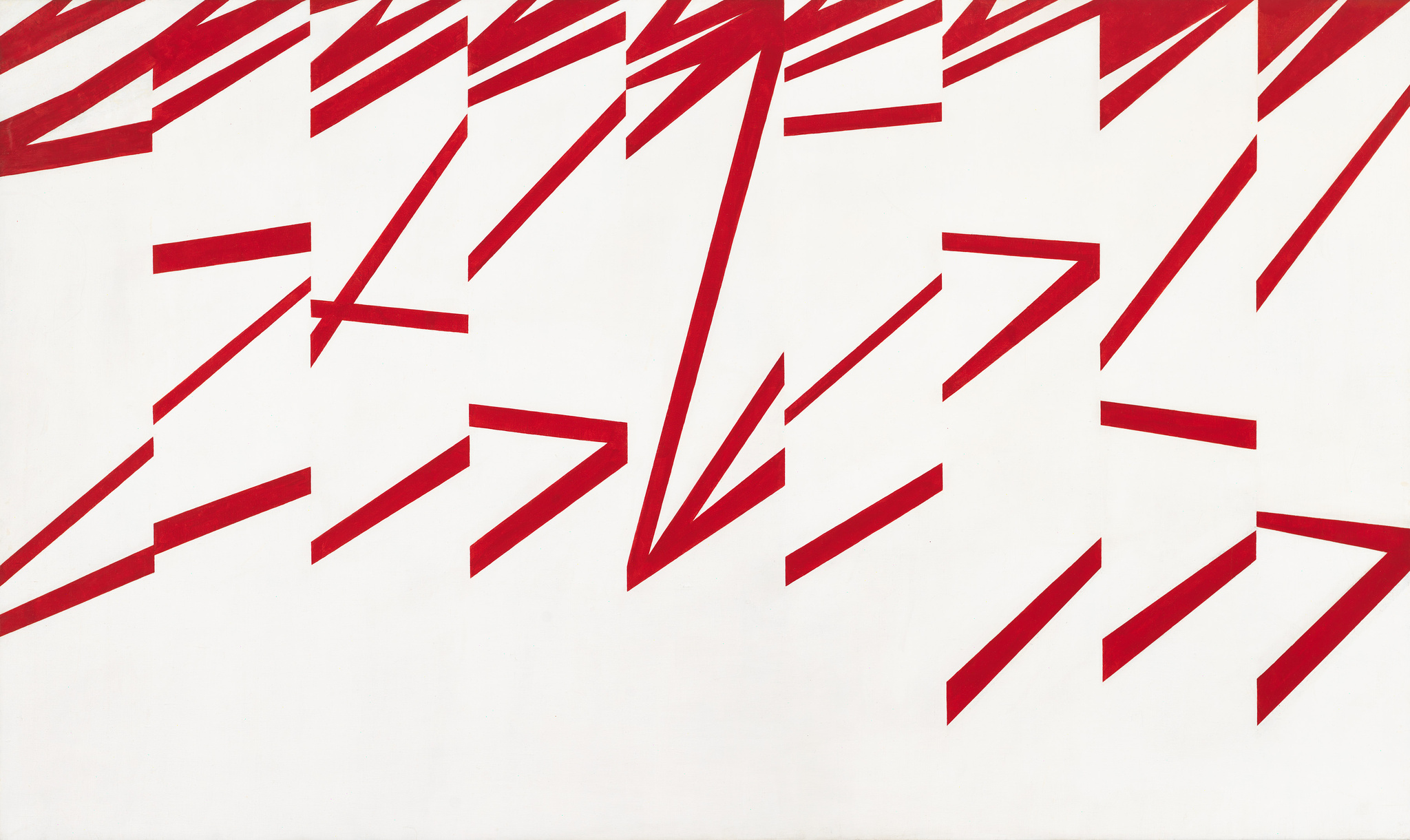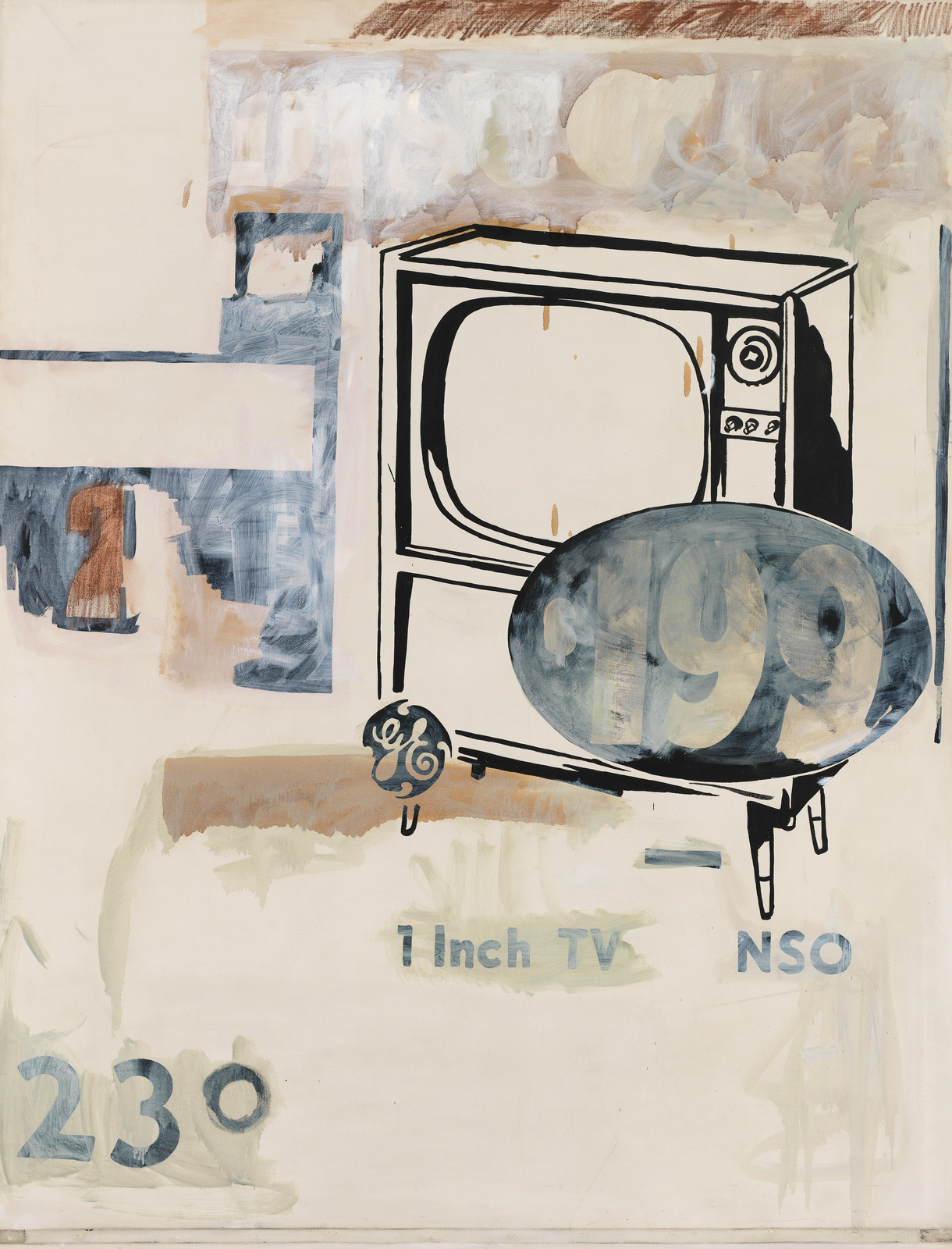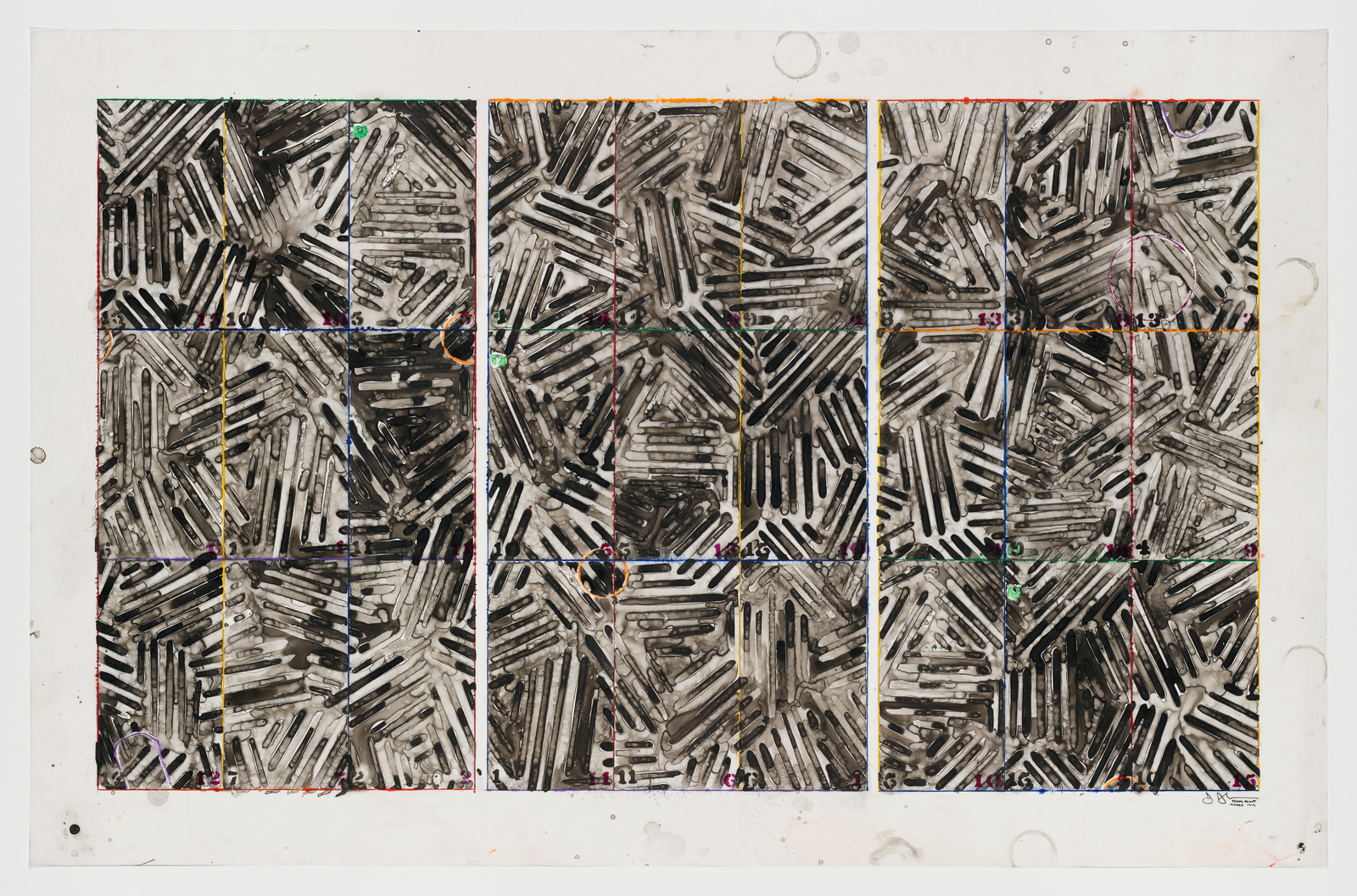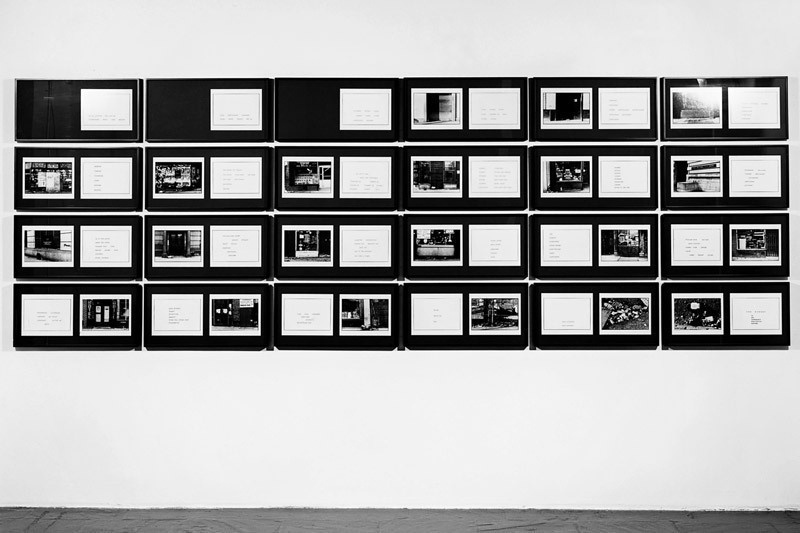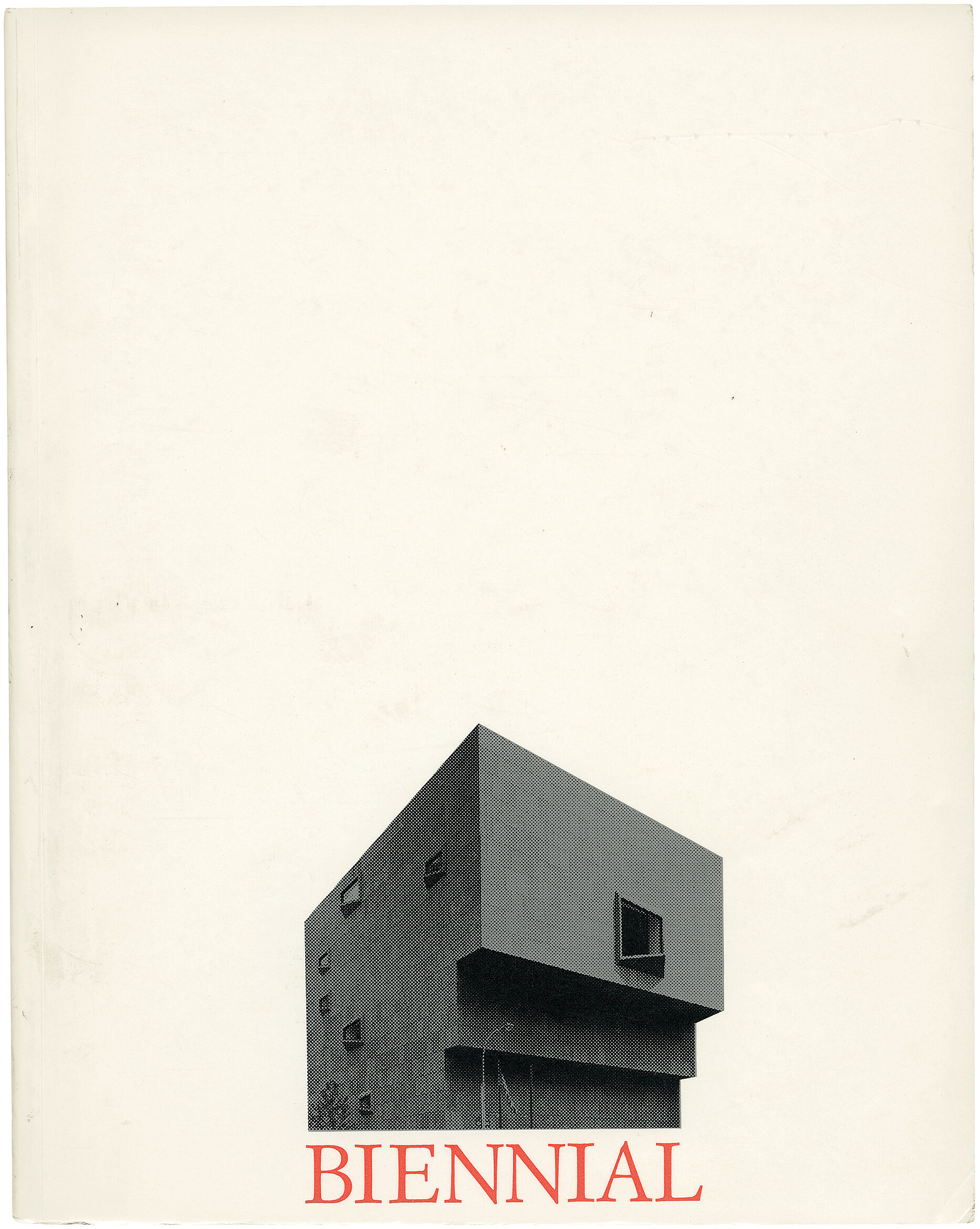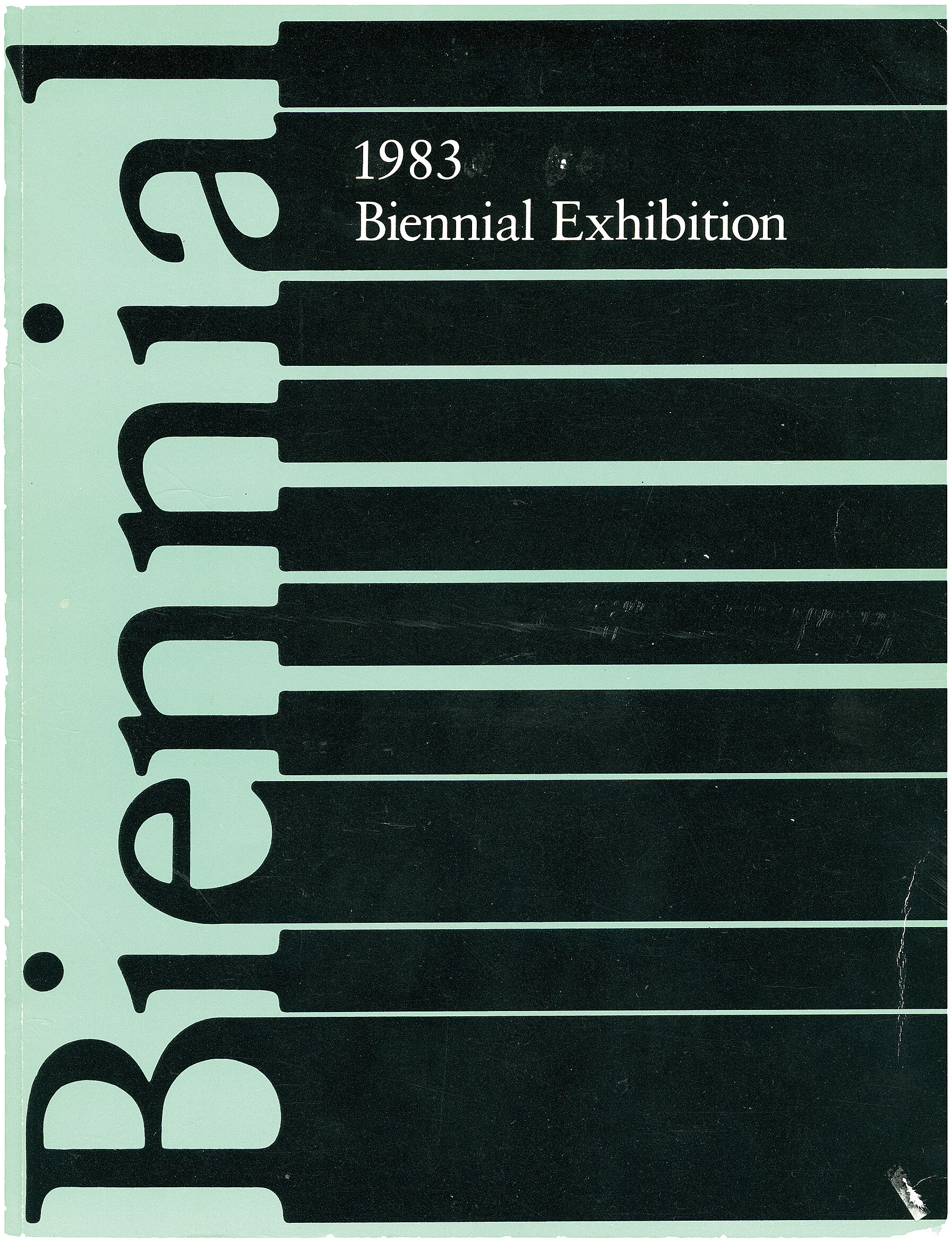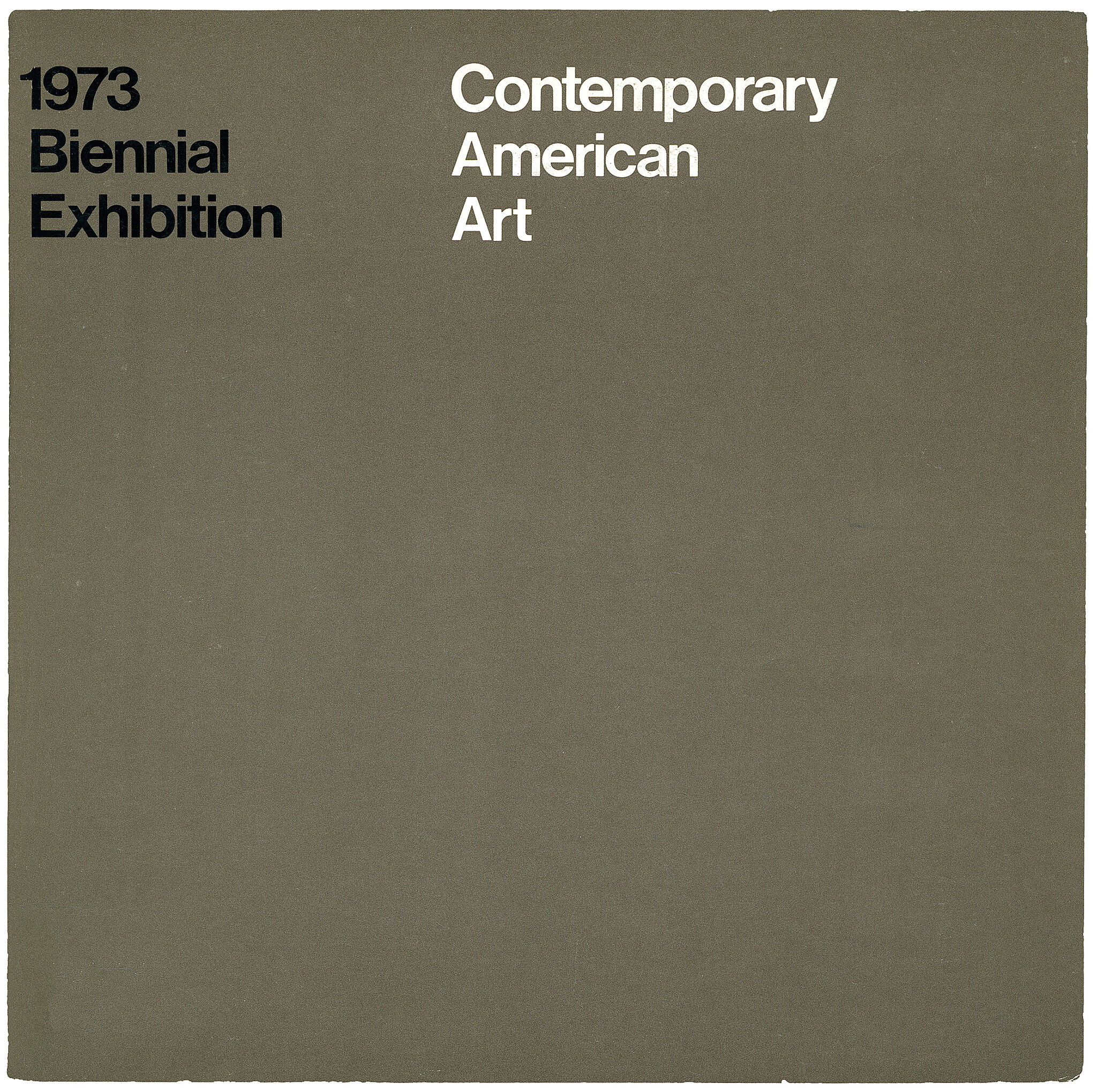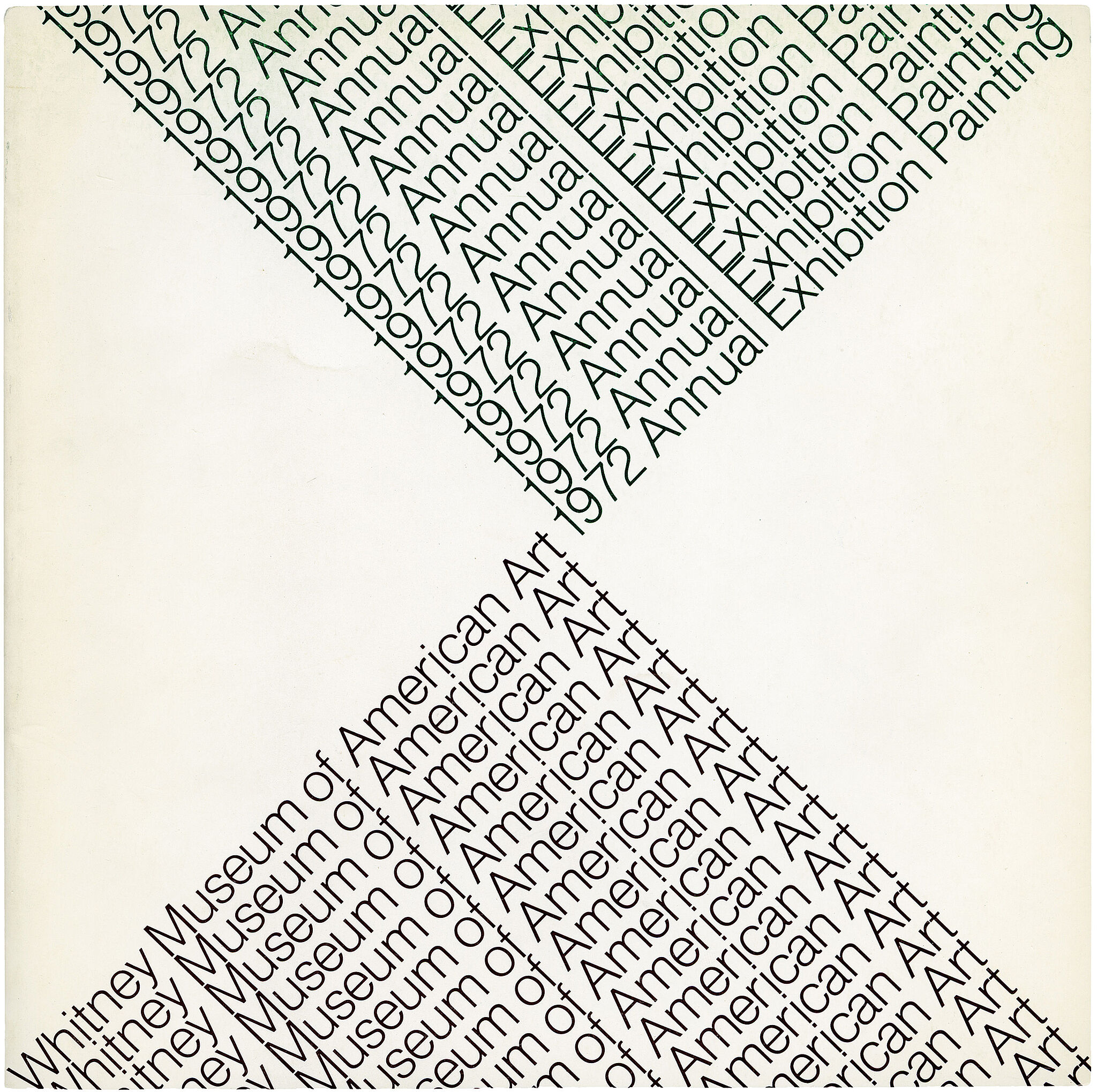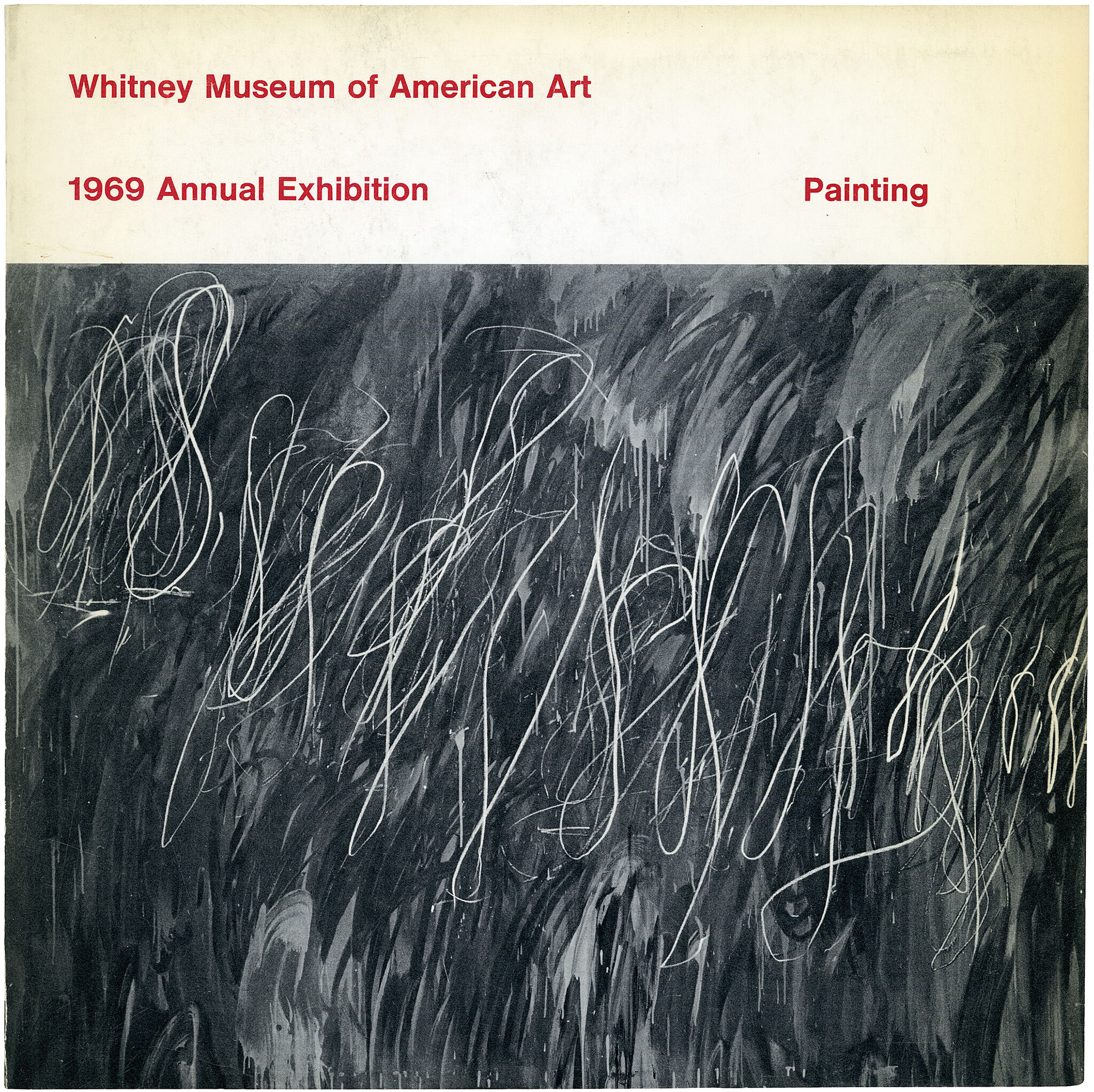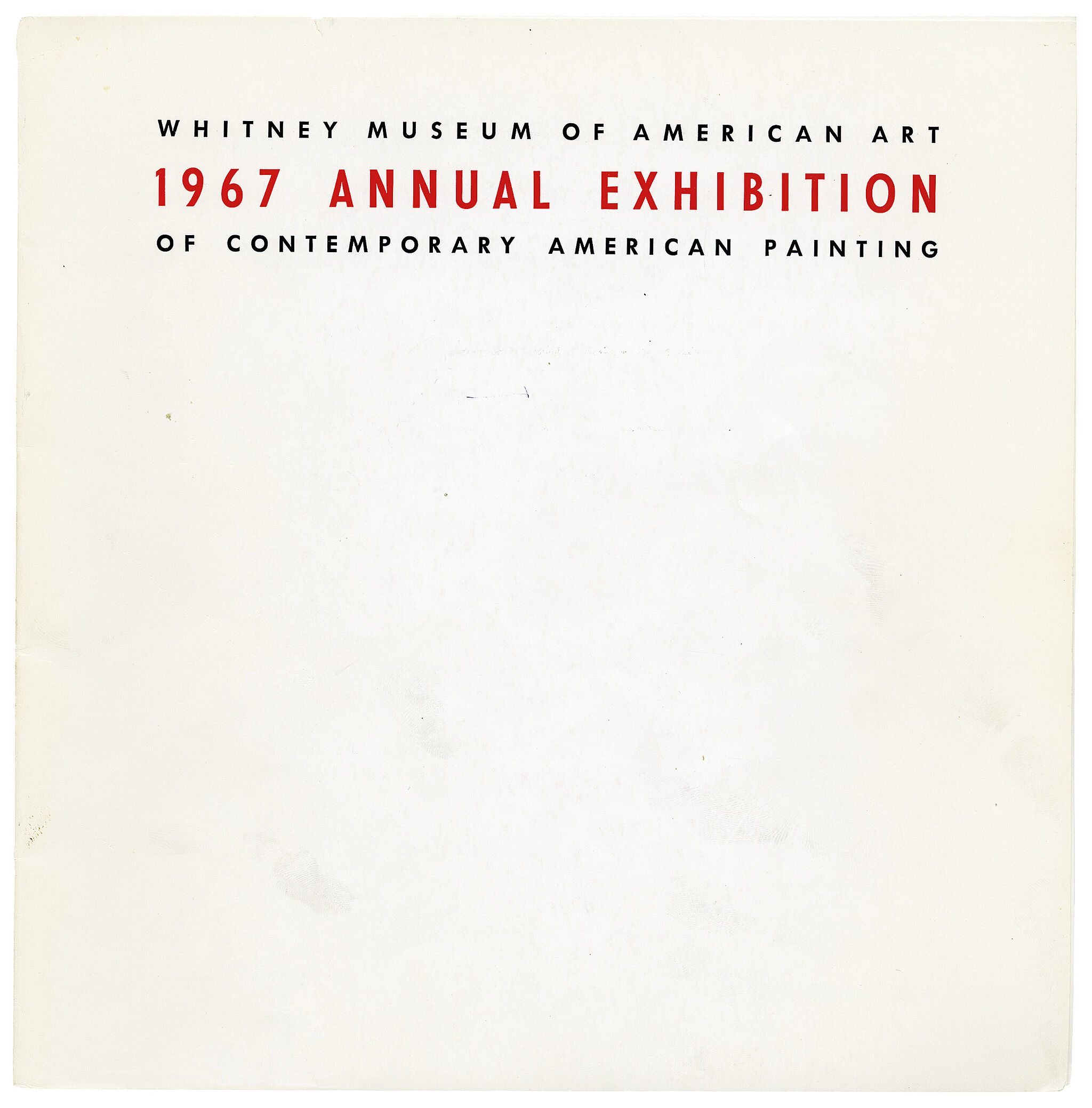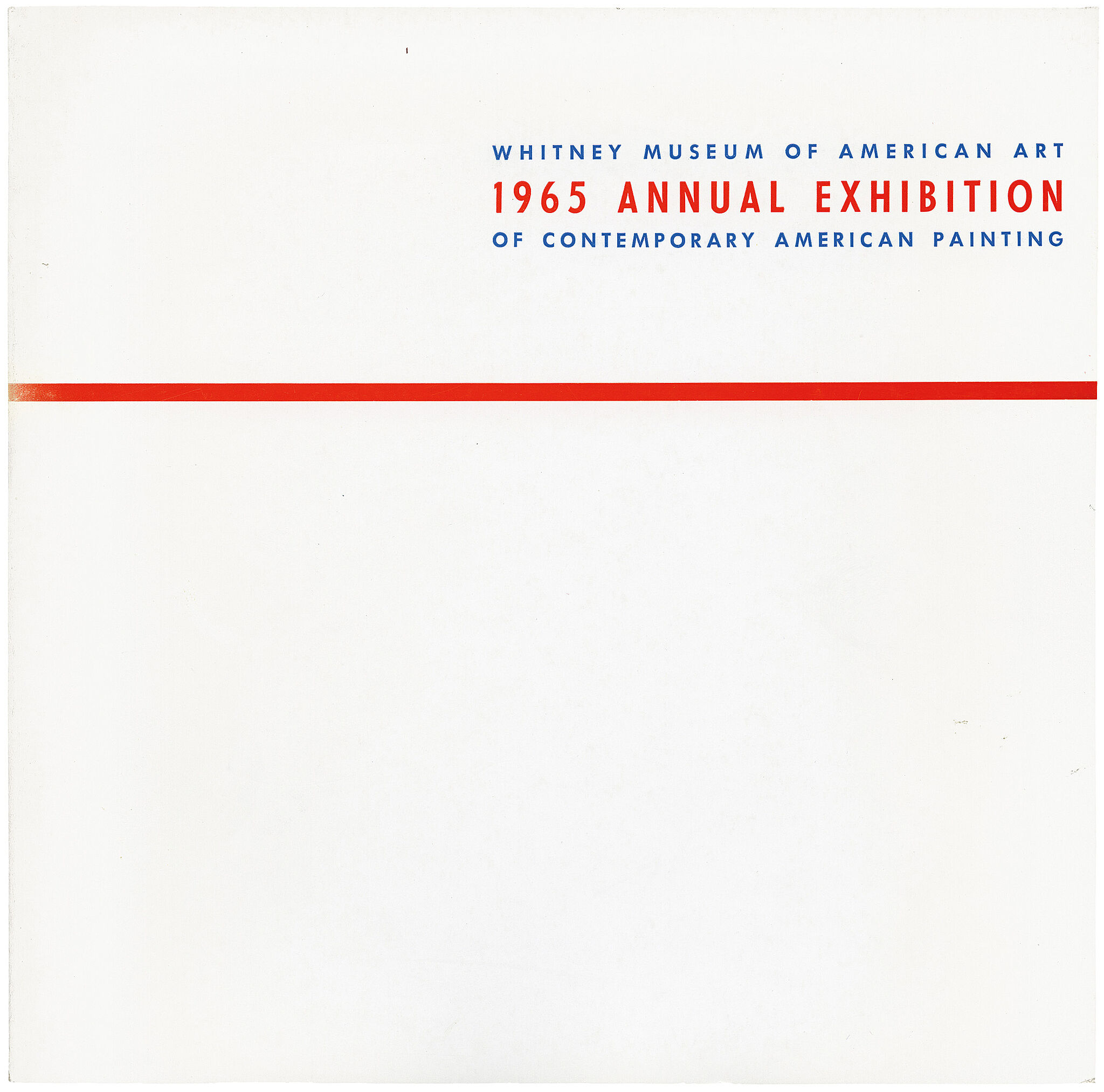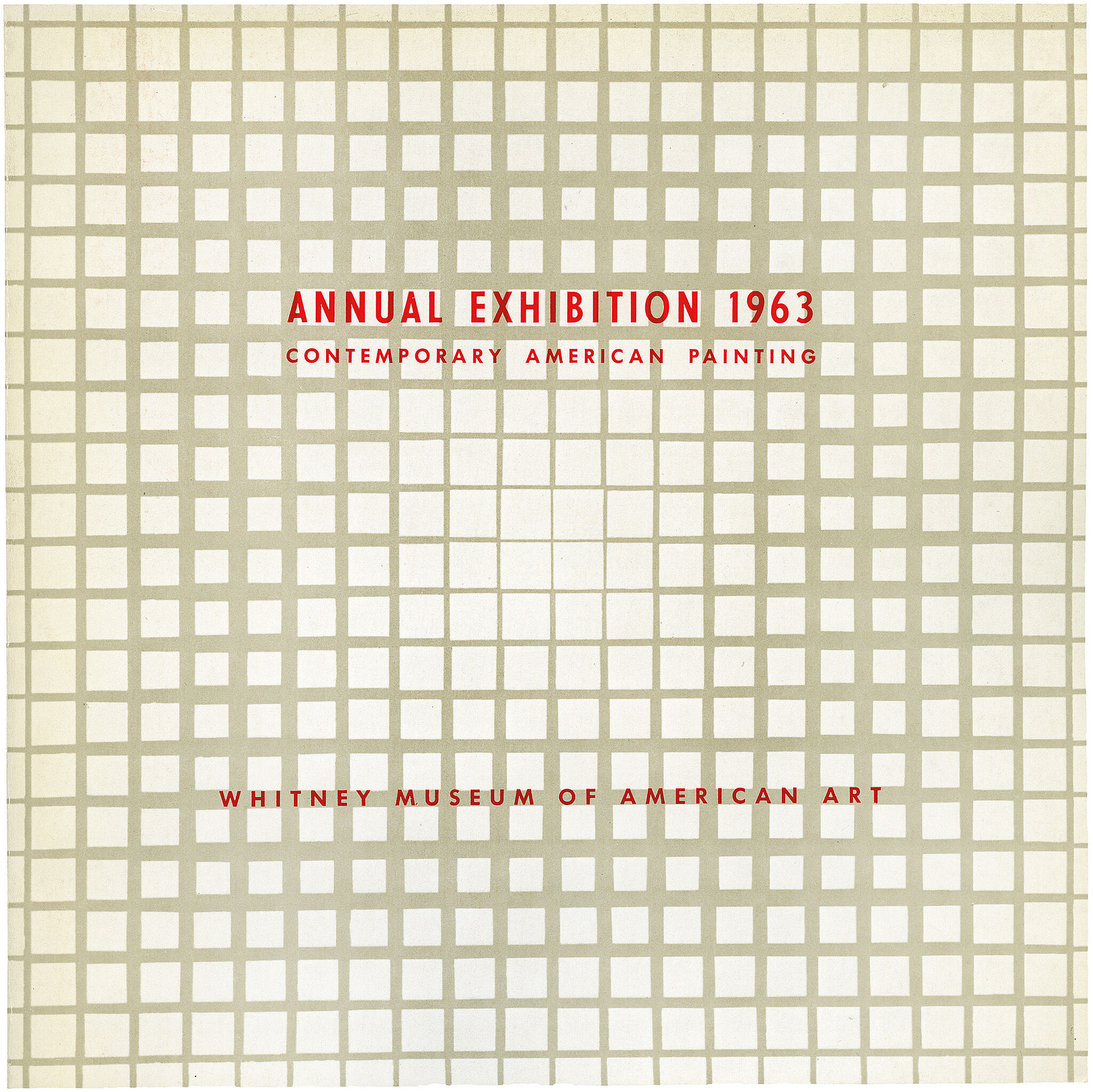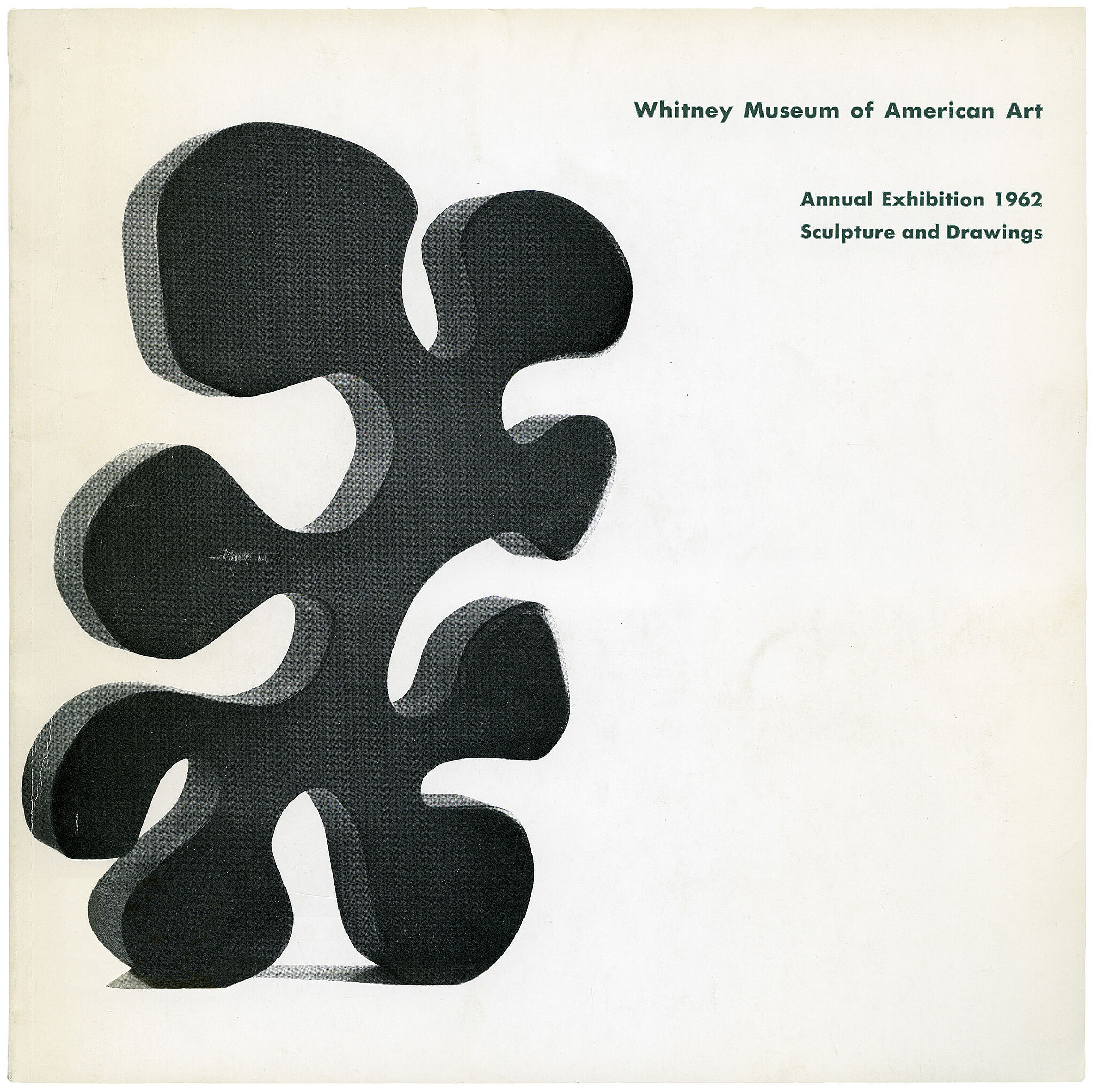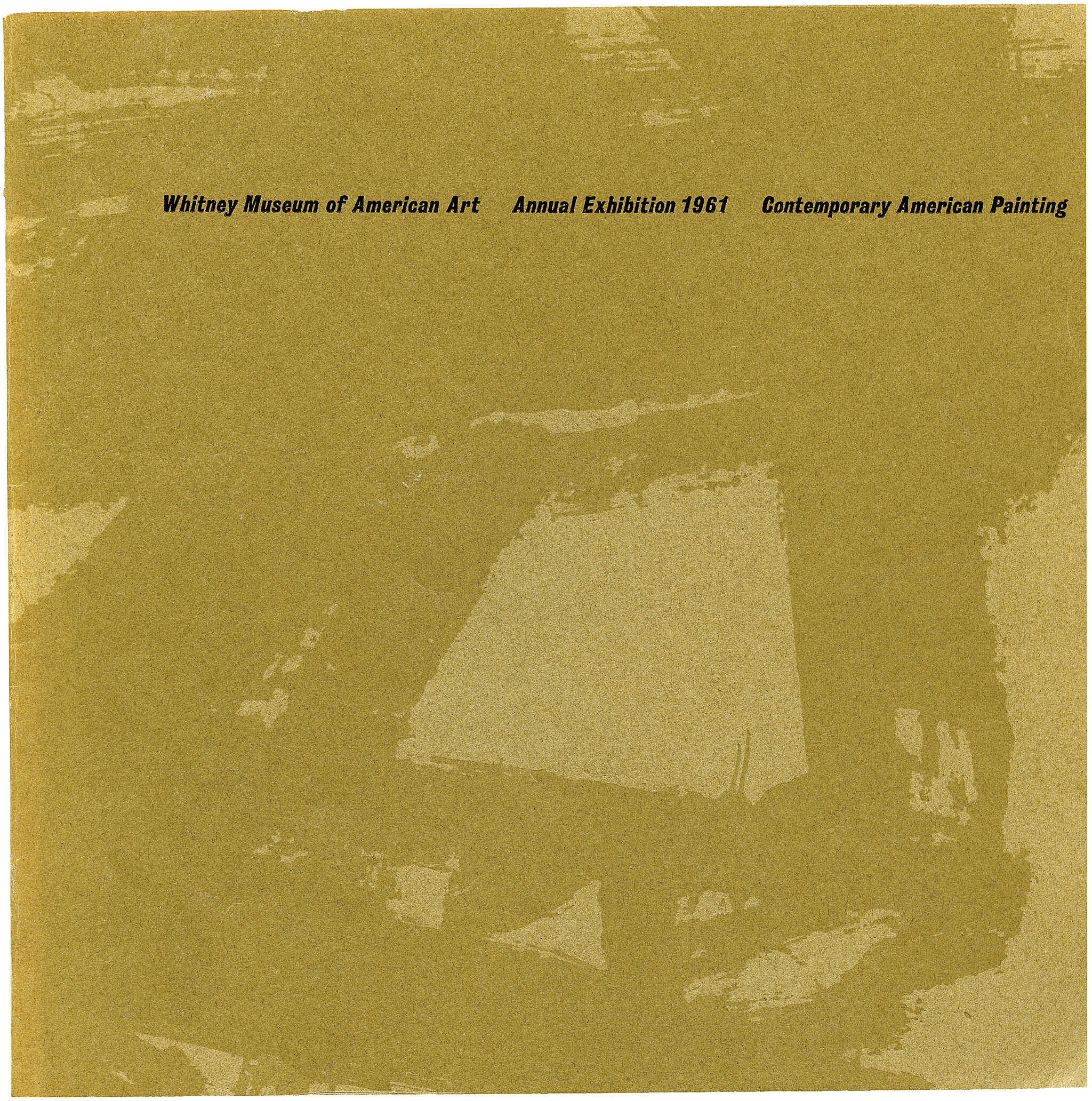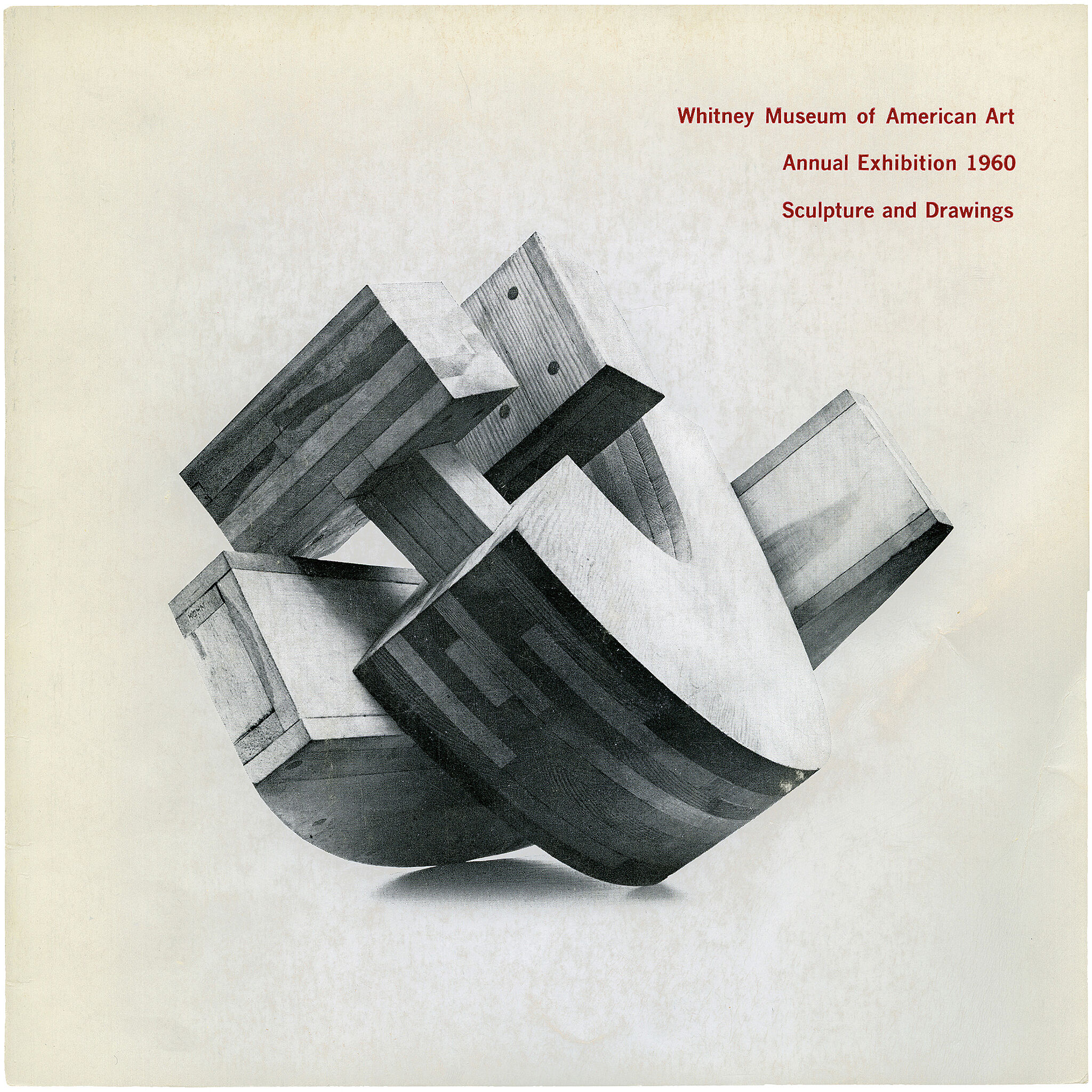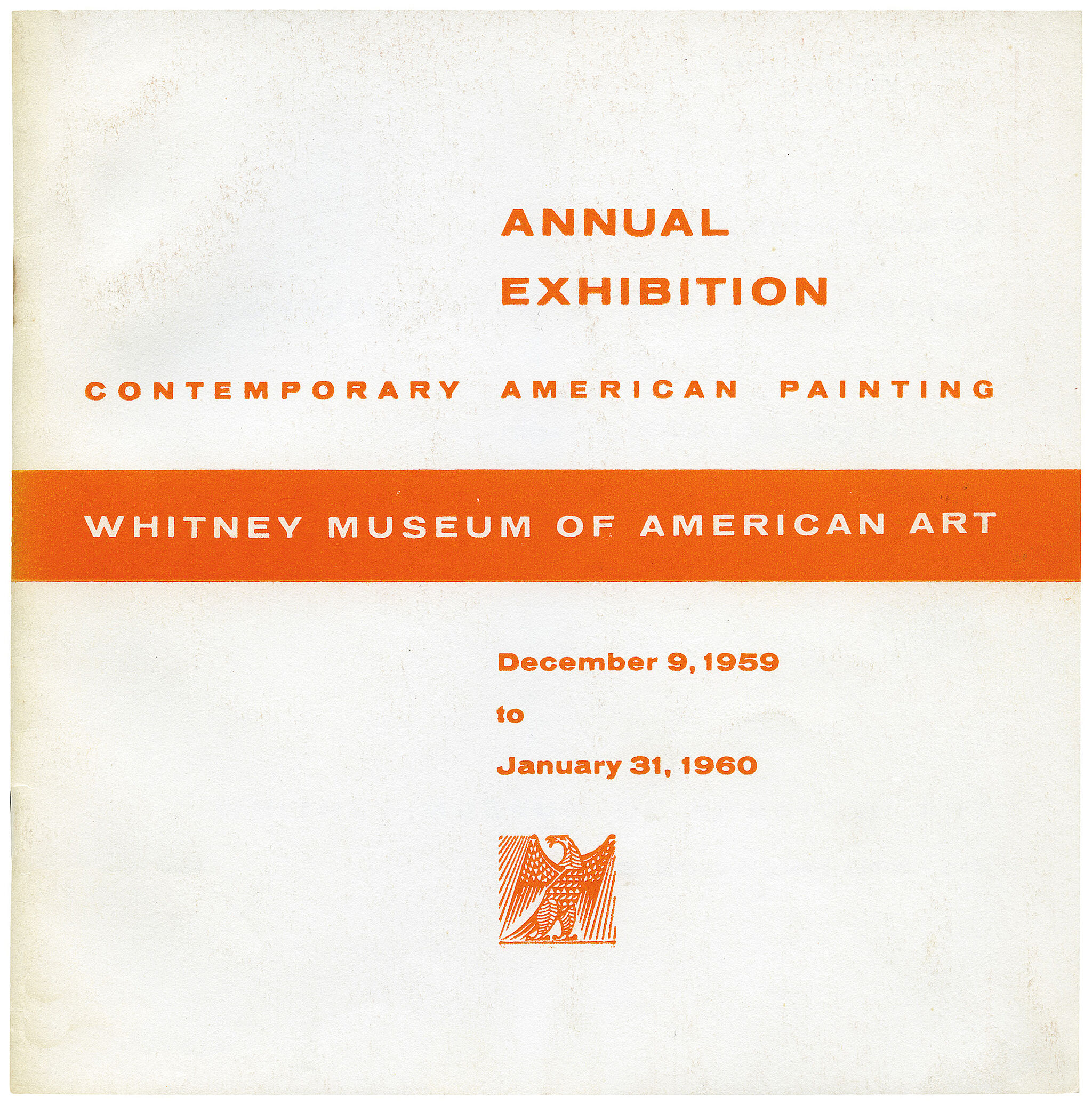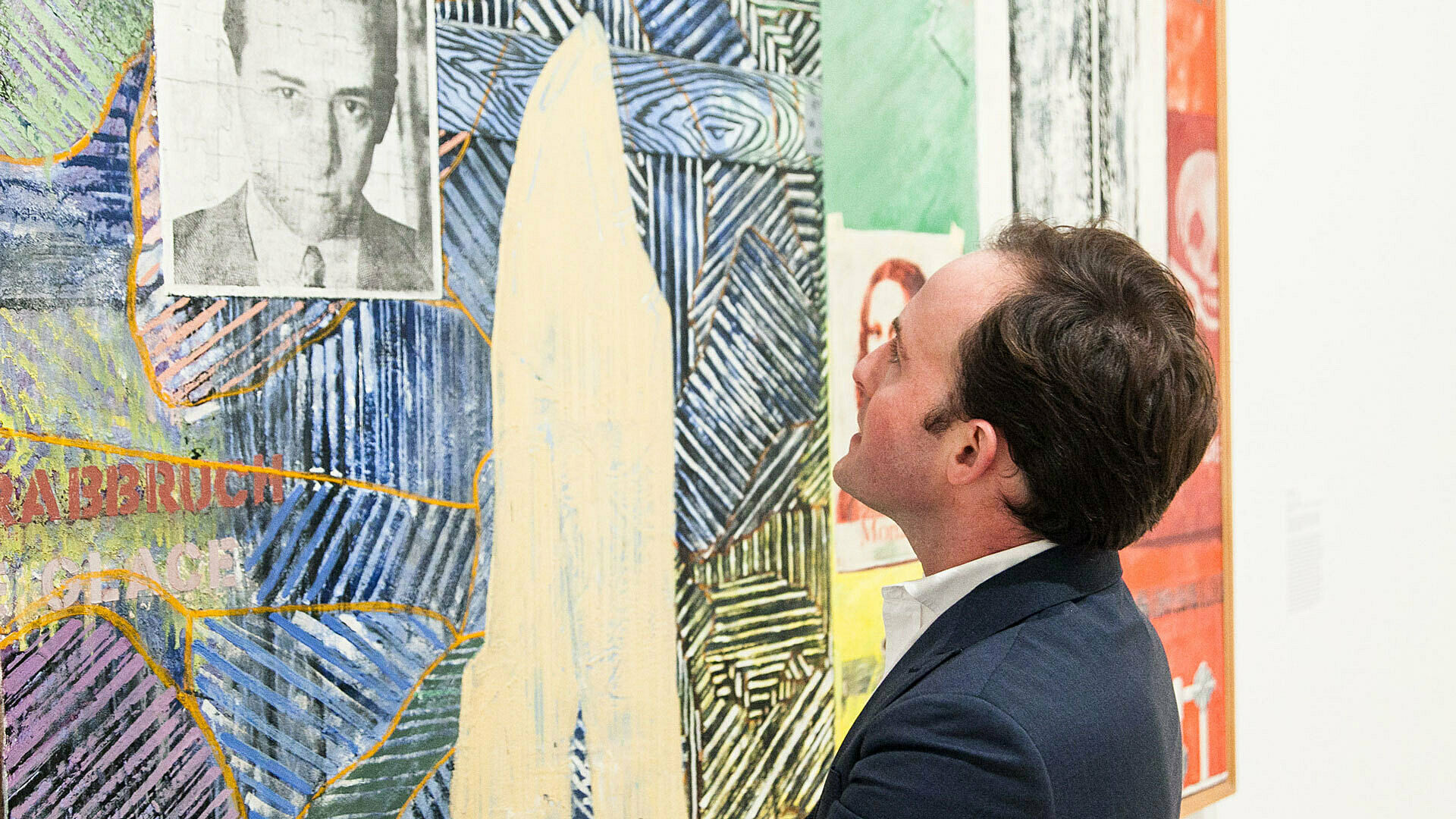Jasper Johns
1930–
In the mid-1950s, Jasper Johns began making paintings of recognizable objects and images, including the American flag, targets, and numbers. As the artist explained, these subjects are “things the mind already knows,” things that are “seen but not looked at, not examined.” In 1954, Johns had a dream that he painted the American flag. He carried out the idea for the first time a year later, and in 1958 he completed Three Flags, arranging three canvases in a concentric stack. He used encaustic, a fast-drying mixture of pigment suspended in warm wax, to accumulate brushstrokes and achieve an agitated, textured surface. Projecting almost five inches from the wall, the work signals, as Johns asserted, that “the painting of a flag is . . . no more about a flag than about a brushstroke, or about the physicality of paint,” or, he might have added, about the painting’s physicality as an object.
Johns often reworks motifs in various mediums—a prime example of this is a paintbrush-filled Savarin coffee can from his studio. An image of the can was used by Johns in a lithograph announcing his 1977 retrospective at the Whitney, and then in 1981 he adjusted the composition to invoke a haunting self-portrait by Edvard Munch in which Munch depicted his face and shoulders hovering above a skeletal arm. Johns added the initials E. M., incorporated an imprint of an arm, likely his own, and deployed the brush-filled can as his visage. Eleven of the impressions rejected from the 1981 edition were then used by Johns as the basis for a new series of monotypes—among them, the Whitney’s Savarin.
In the early 1980s Johns started to render perspectival space in his paintings. For Racing Thoughts, Johns used trompe-l’oeil illusionism to “tack” and “tape” personal mementos, both depicted and actual, to the painting’s surface. The complex layering of imagery is set in the bathroom at his former home (note the faucet at bottom right and the khaki pants hanging at left). Like the flags and numbers, these new motifs—Johns calls them “fragments of thoughts”—such as a lithograph by Barnett Newman, a pot by the ceramicist George Ohr, and a jigsaw puzzle portrait of his dealer Leo Castelli, would recur in subsequent works.
Dana Miller and Adam D. Weinberg, Handbook of the Collection (New York: Whitney Museum of American Art, 2015), 194–195.
Introduction
Jasper Johns (born May 15, 1930) is an American painter, sculptor, draftsman, and printmaker. Considered a central figure in the development of American postwar art, he has been variously associated with abstract expressionism, Neo-Dada, and pop art movements.
Johns was born in Augusta, Georgia, and raised in South Carolina. He graduated as valedictorian from Edmunds High School in 1947 and briefly studied art at the University of South Carolina before moving to New York City and enrolling at Parsons School of Design. His education was interrupted by military service during the Korean War. After returning to New York in 1953, he worked at Marboro Books and began associations with key figures in the art world, including Robert Rauschenberg, with whom he had a romantic relationship until 1961. The two were also close collaborators, and Rauschenberg became a profound artistic influence.
Johns's art career took a decisive turn in 1954 when he destroyed his existing artwork and began creating paintings of flags, maps, targets, letters, and numbers for which he became most recognized. These works, characterized by their incorporation of familiar symbols, marked a departure from the individualism of Abstract Expressionist style and posed questions about the nature of representation. His use of familiar imagery, such as the American flag, played on the ambiguity of symbols, and this thematic exploration continued throughout his career in various mediums, including sculpture and printmaking.
Among other honors, Johns received the Golden Lion at the Venice Biennale in 1988, the National Medal of Arts in 1990, and the Presidential Medal of Freedom in 2011. He was elected to the American Academy of Arts and Letters in 1973 and the American Philosophical Society in 2007. He has supported the Merce Cunningham Dance Company and contributed significantly to the National Gallery of Art's print collection. Johns is also a co-founder of the Foundation for Contemporary Arts. He currently lives and works in Connecticut. In 2010, his 1958 painting Flag was sold for a reported $110 million in a private transaction, becoming the most expensive artwork sold by a living artist.
Wikidata identifier
Q155057
Information from Wikipedia, made available under the Creative Commons Attribution-ShareAlike License . Accessed December 18, 2025.
Introduction
American painter, sculptor, and printmaker who was one of the leaders of the Pop Art movement of the late 1950s and early 1960s. He is best known for his images of targets, flags, maps, and other instantly recognizable subjects. Although he attended the University of South Carolina for over a year and later briefly attended an art school in New York, Johns is largely considered a self-taught artist.
Country of birth
United States
Roles
Artist, assemblage artist, collagist, graphic artist, illustrator, lithographer, painter, pastelist, photographer, sculptor
ULAN identifier
500022247
Names
Jasper Johns
Information from the Getty Research Institute's Union List of Artist Names ® (ULAN), made available under the ODC Attribution License. Accessed December 18, 2025.

